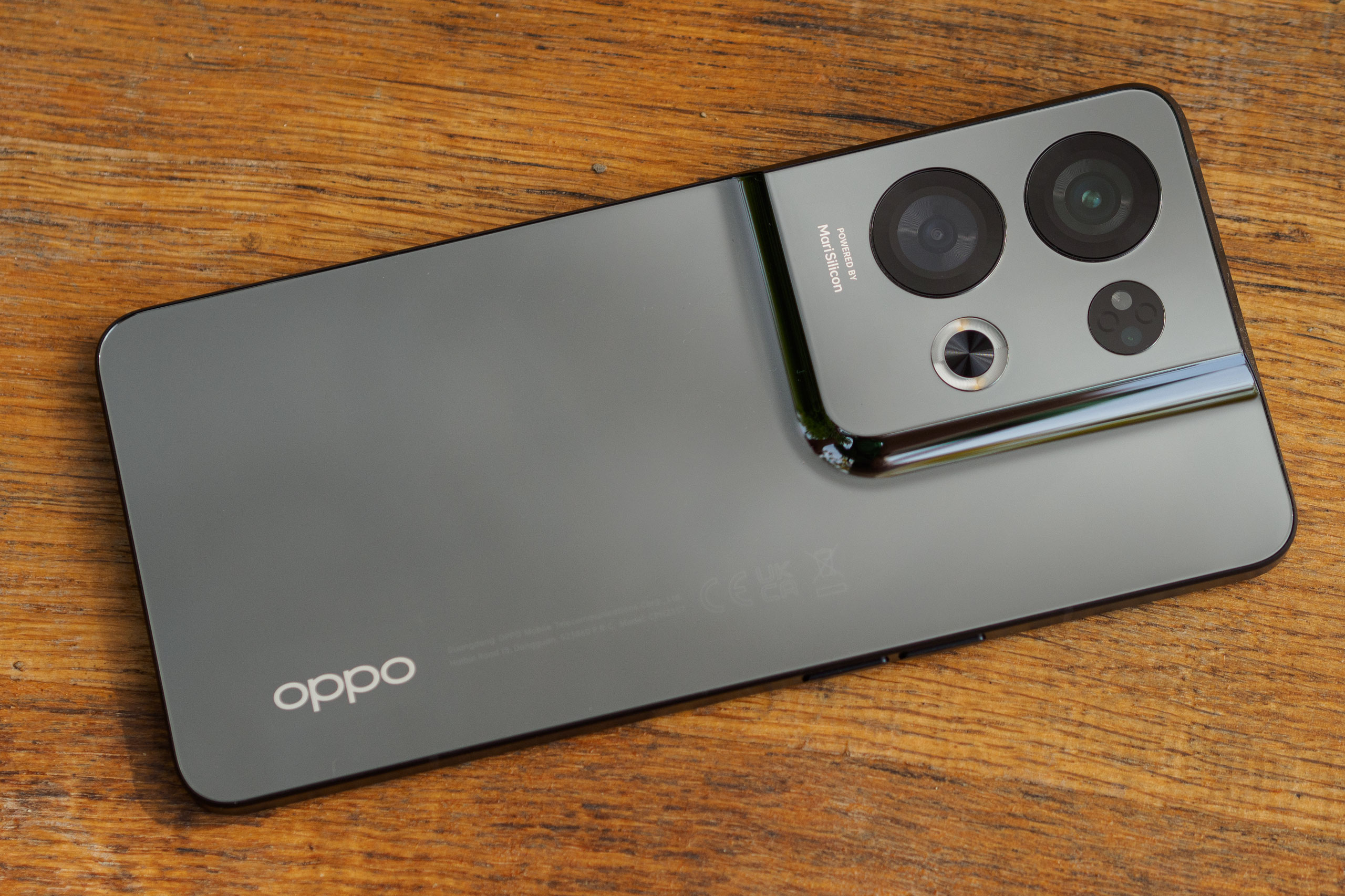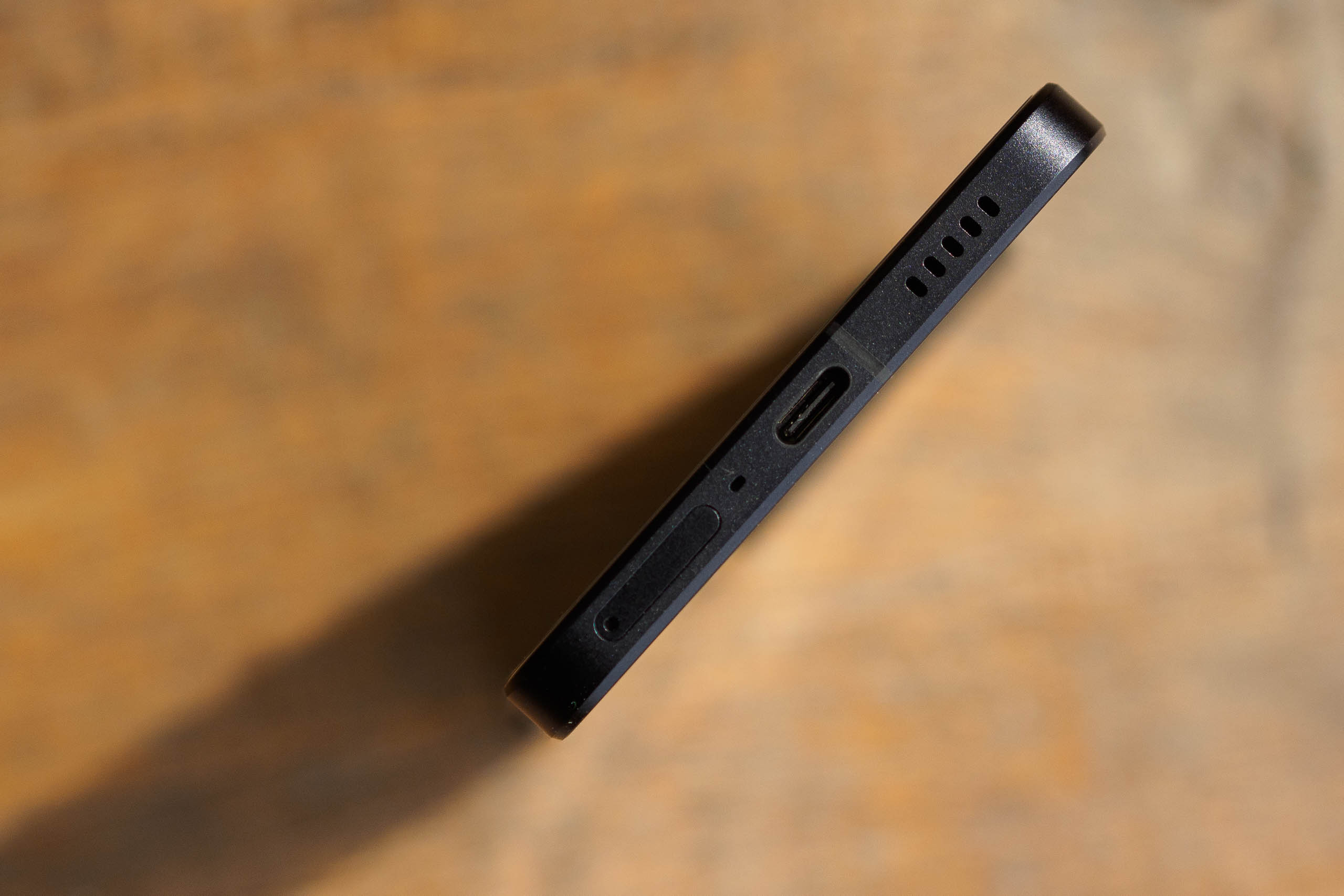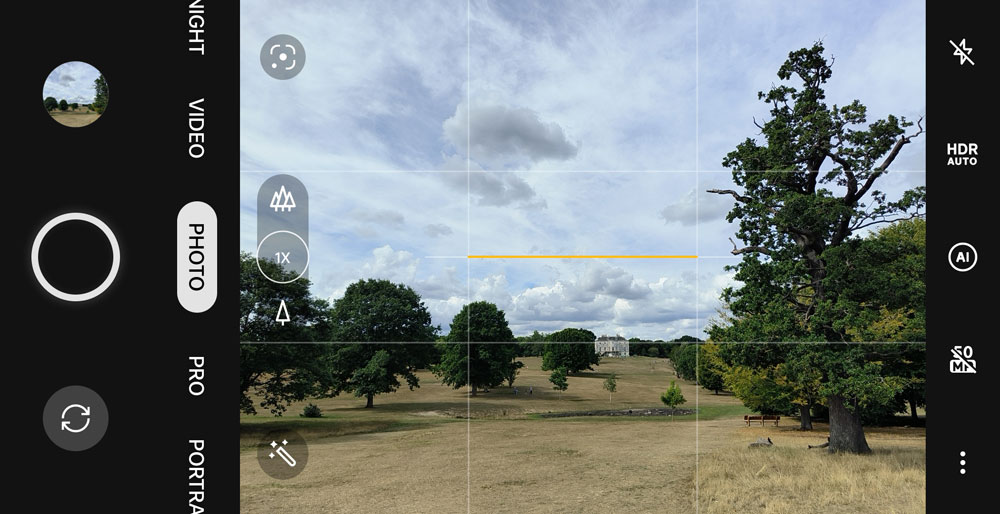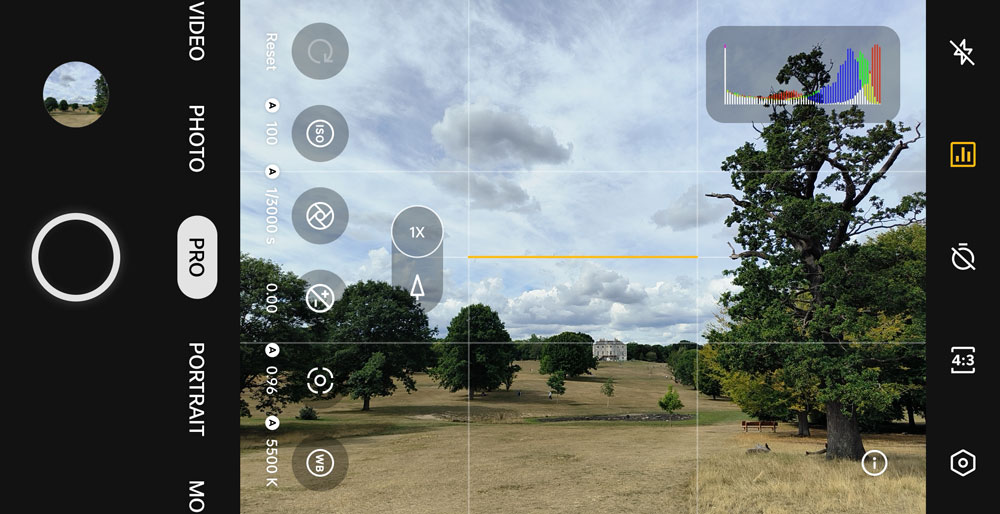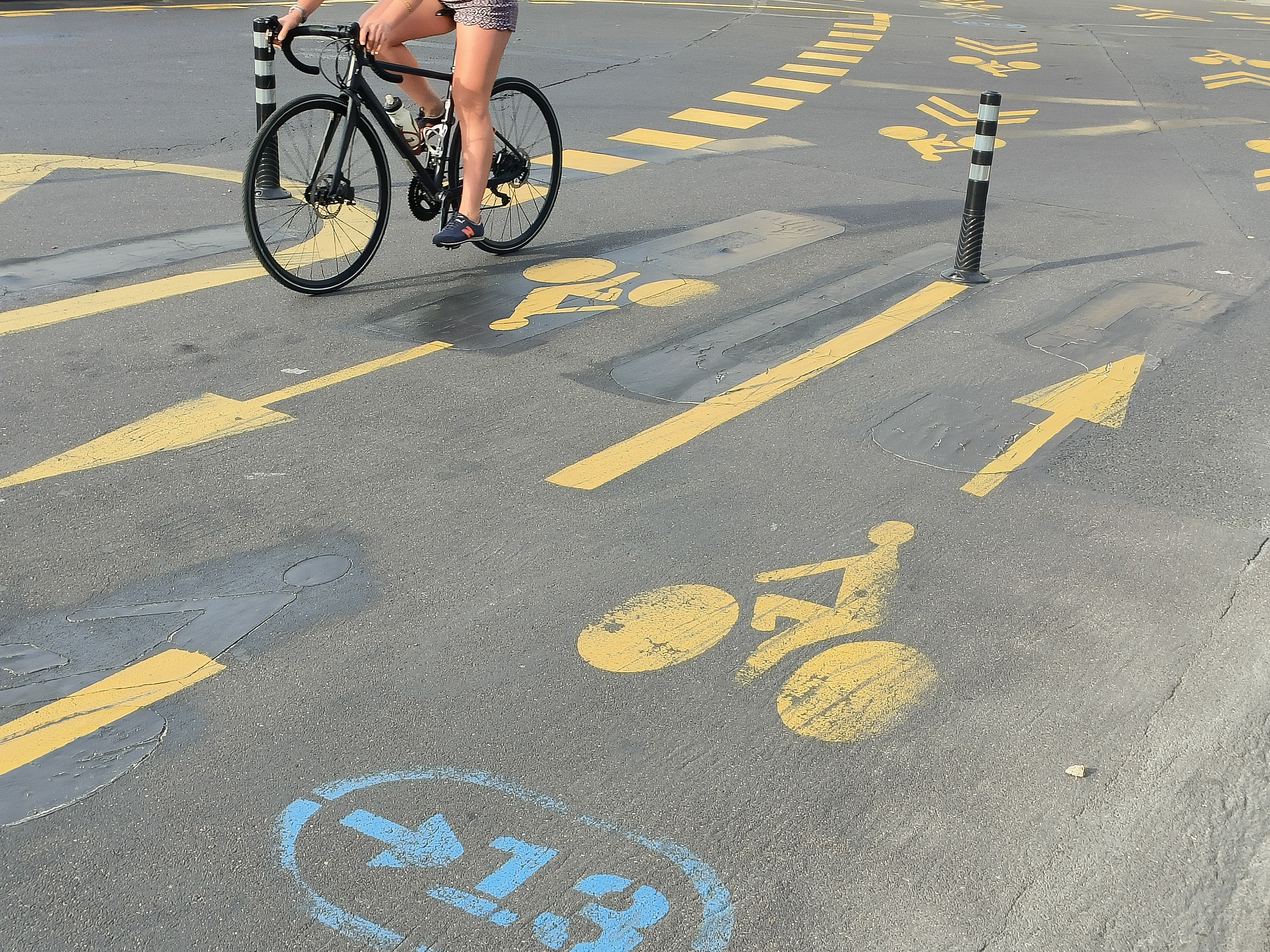OPPO’s Reno line represents the middle tier of its smartphone range, below the premium Find series that includes the flagship OPPO Find X5 Pro. At $540 / £449, the OPPO Reno8 Pro 5G heads a three-strong line-up, alongside the more affordable Oppo Reno8 and Reno8 Lite. Could this be one of the best budget phones available? Find out in our review.
Since the launch of the Reno8 Pro, the OPPO Reno 10 has come along selling for $399 / £399, another great alternative if you are looking for a camera phone on a budget.
OPPO Reno8 Pro 5G – At a glance:
- $540 / £549
- Android smartphone
- 6.7in, 20:9 screen
- 256GB storage
- 50MP wide
- 8MP ultra-wide
- 2MP macro camera
- 4K 30p video
- www.oppo.com/uk
Oppo is particularly keen to promote its photographic capabilities, with the Reno8 Pro being distinguished from its cheaper siblings by its inclusion of the MariSilicon X neural processing unit (NPU), inherited from the Find X5 Pro. This promises improved image quality in low light, especially for video. Keep reading for our full review, but also don’t forget to check out our guide to how to take better smartphone photos.
With smartphones having decimated the compact camera market, they’re now the pocket point-and-shoot camera of choice for most people. The received wisdom is that serious photographers should buy flagship models in the £1,000 bracket to get the best cameras, but many will baulk at spending such a sum, especially in the current climate. So what compromises come from stepping down a level?
OPPO Reno8 Pro 5G: Features and design
Measuring 161.2×74.2×7.3mm and with a 6.7in, 20:9 screen, the OPPO Reno8 Pro is similar in size to most other current mid-range or high-end Android phones. As with the Find X5 Pro, it uses a metal unibody design with Gorilla Glass front and back, which makes a positive impression quality-wise.
Unlike its stablemate, though, the Reno8 Pro is slab-like and angular, with flat sides rather than smooth curves, which means it’s not especially comfortable to hold. Thankfully the edges are chamfered and not completely sharp.
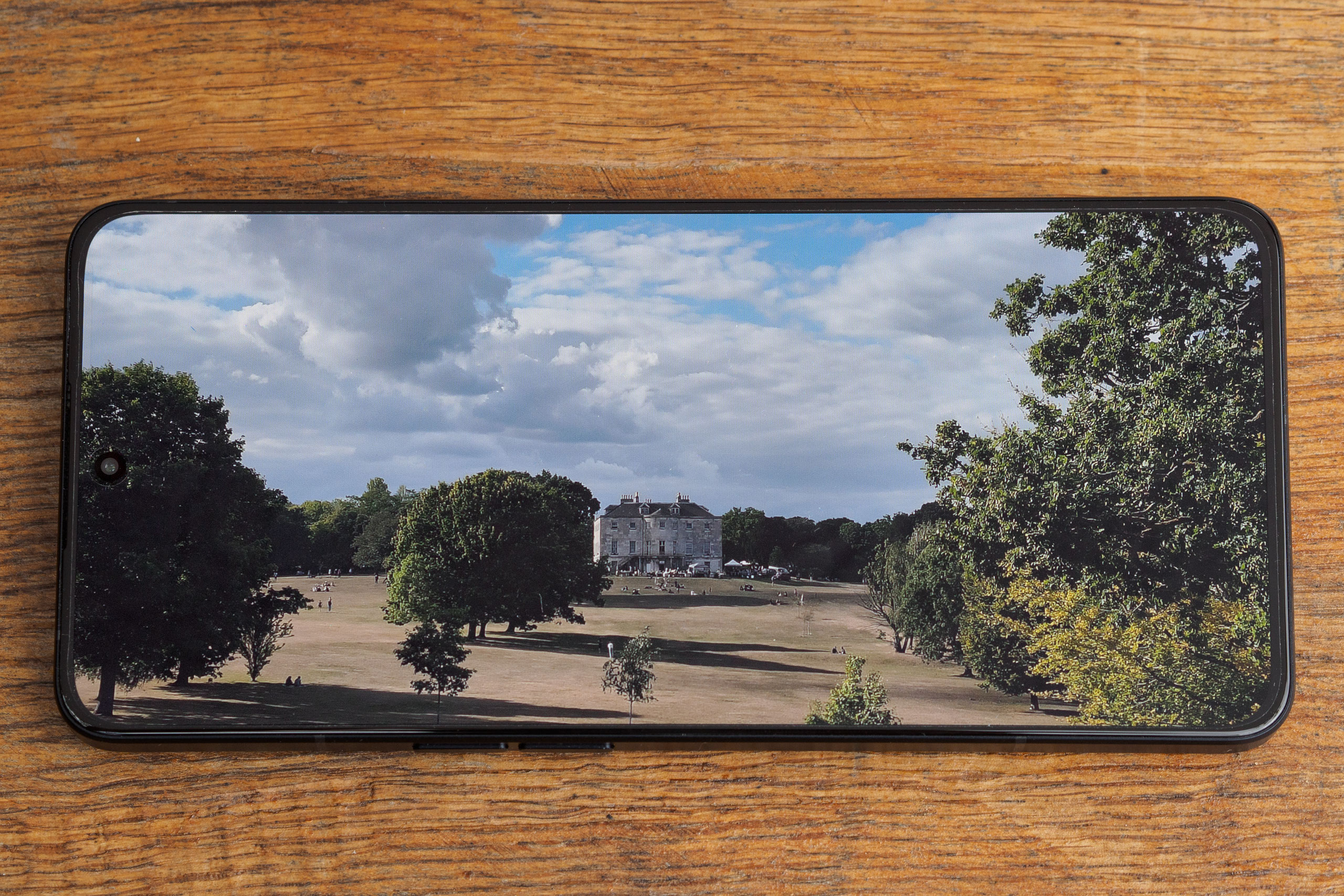
The OPPO Reno8 Pro’s screen covers almost the entire front face, with just a hole-punch cut-out for the selfie camera. Photo: Andy Westlake
The highly polished back is, however, very slippery indeed. This device will slide out of your hand, or off a not-completely-flat surface, at the drop of a hat. I made a point of holding it carefully two-handed whenever I used the camera, and would definitely invest in a case (you don’t get one in the box).
The device has an IP54 rating for dust and water resistance, which means it should survive being accidentally splashed. But unlike more expensive models, it’s not protected against being submerged.
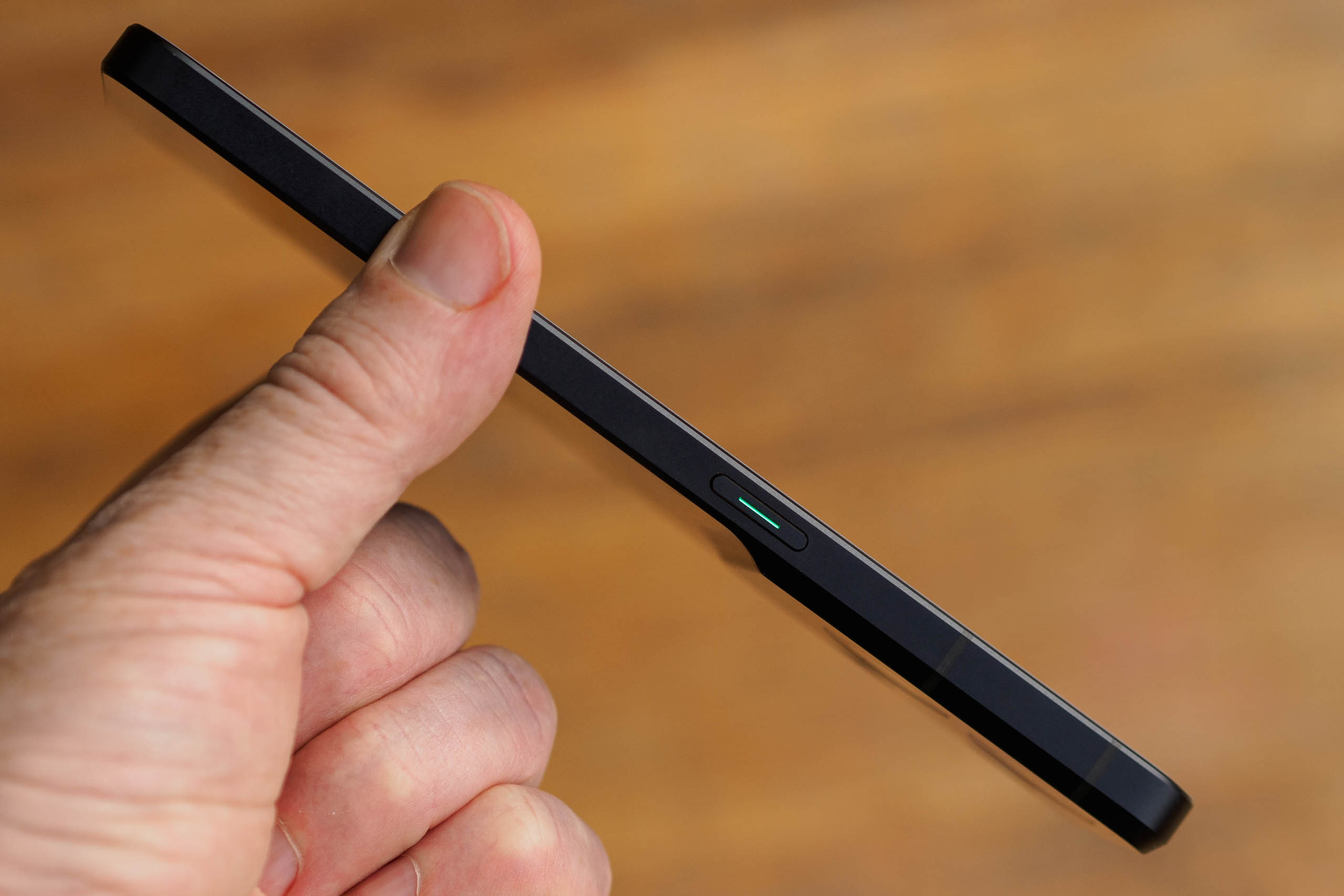
The OPPO Reno8 Pro uses an angular, flat-sided design. Here you can clearly seen the power button, highlighted by a green stripe. Photo: Andy Westlake
Naturally, Oppo claims this is the most powerful Reno model yet, with its MediaTek Dimensity 8100-MAX processor backed up by 8GB RAM and 256GB storage. It certainly feels snappy in operation, with screens scrolling smoothly and apps such as Lightroom opening and running responsively.
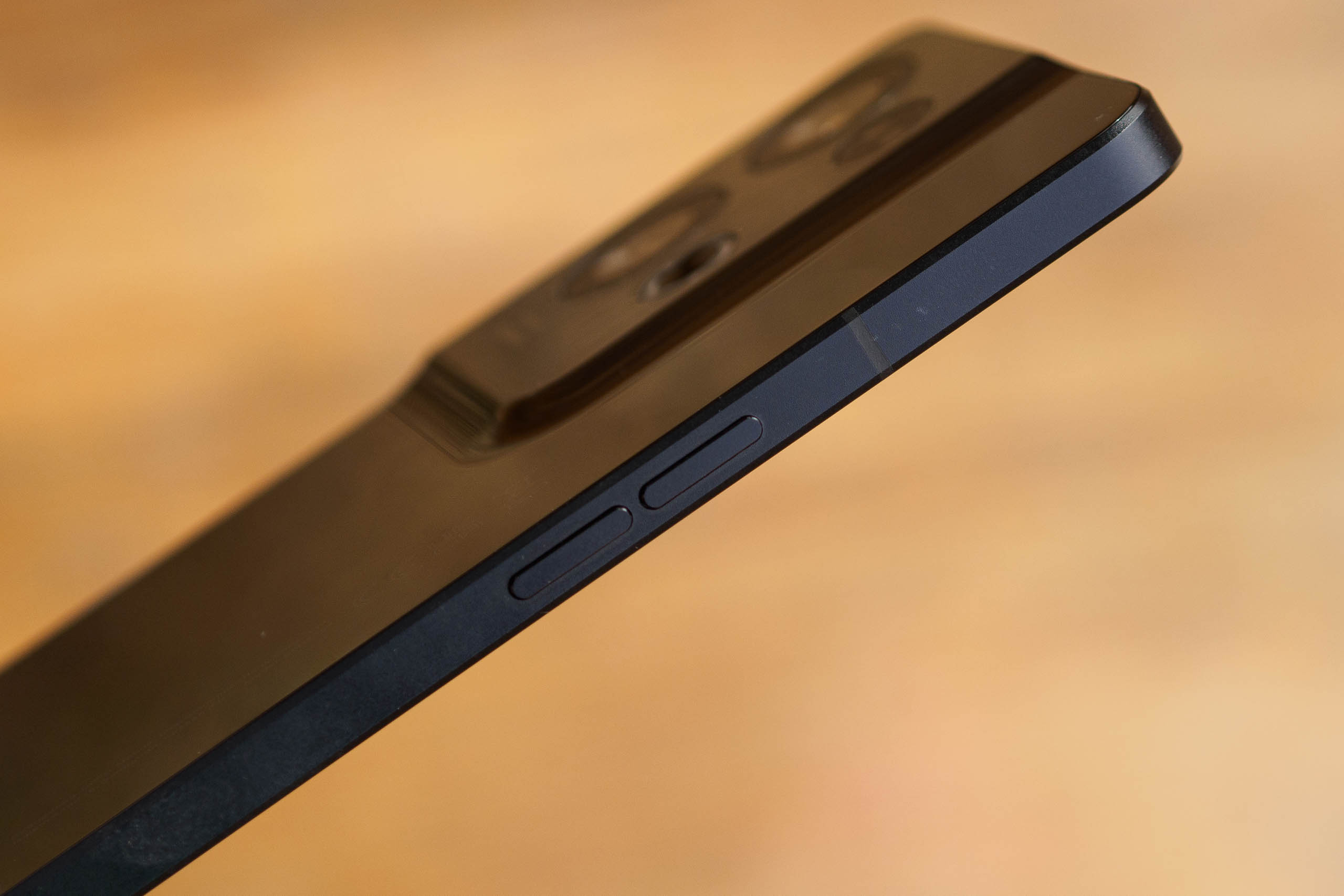
The volume control buttons can be used to fire up the camera app and take pictures. Photo: Andy Westlake
The device is powered by a 4,500 mAh battery that OPPO says can be charged to 50% in just 10 minutes, using the 80W USB-C power block that comes in the box.
The firm also claims that the battery should maintain 80% of its capacity across 1,600 charge cycles, equating to more than four years normal use. This is good news, with consumers now tending to own and use devices for rather longer than in the past.
A slim bulge at the top left corner houses the camera setup, with the main and wideangle lenses emphasised by oversized circular glass covers.
The power button is conventionally placed on the right-hand side, while the volume control buttons are found on the left. Double-clicking either of these can activate the camera app when the phone is in standby, and they can be used to take pictures, too.
At the base of the device, you’ll find the SIM tray and the USB-C port.
OPPO Reno8 Pro 5G: Camera system
Purely in terms of specification, the Reno8 Pro’s camera setup is a step down from the Find X5 series. The firm’s marketing materials proudly proclaim that it employs ‘Dual Sony Flagship Sensors’, but this refers to the 50MP sensor used for the main camera, and the 32MP unit for the front-facing selfie camera.
Unlike on the Find X5 Pro, the ultra-wide camera is considerably lower spec’ed and there’s no telephoto camera at all, with the device relying on digital zoom instead. But that’s expected at this price point.

The main camera is top left in this view, with the ultra-wideangle camera below. Photo: Andy Westlake
Let’s look at the hardware specs in more detail. The Reno8 Pro’s main camera pairs a 50MP sensor of the 1/1.56in-type (measuring 8.2×6.1mm) with a 23mm-equivalent f/1.8 wideangle lens.
The sensor supports phase-detection autofocus anywhere in the frame, but there’s no optical image stabilisation. It’s joined by a 16mm equivalent f/2.2 ultra-wideangle camera, which uses an 8MP sensor of the much smaller 1/4in-type (3.2 x 2.4mm).
There’s also a 2MP macro camera with a 22mm equivalent f/2.4 lens. As for the selfie camera, this is a 32MP affair with autofocus and a 90° angle of view.
Video recording is available in 4K at 30fps, or Full HD at 60fps. Oppo has included its 4K Ultra Night Video and 4K Ultra HDR Video, both of which are enabled by the MariSilicon X NPU. They’re pretty self-explanatory – the former promises high-quality video in very low light, while the latter aims to balance extremes of lighting in the same scene, for example a subject in shade against a bright sky. Both operate entirely automatically, with no user intervention required.
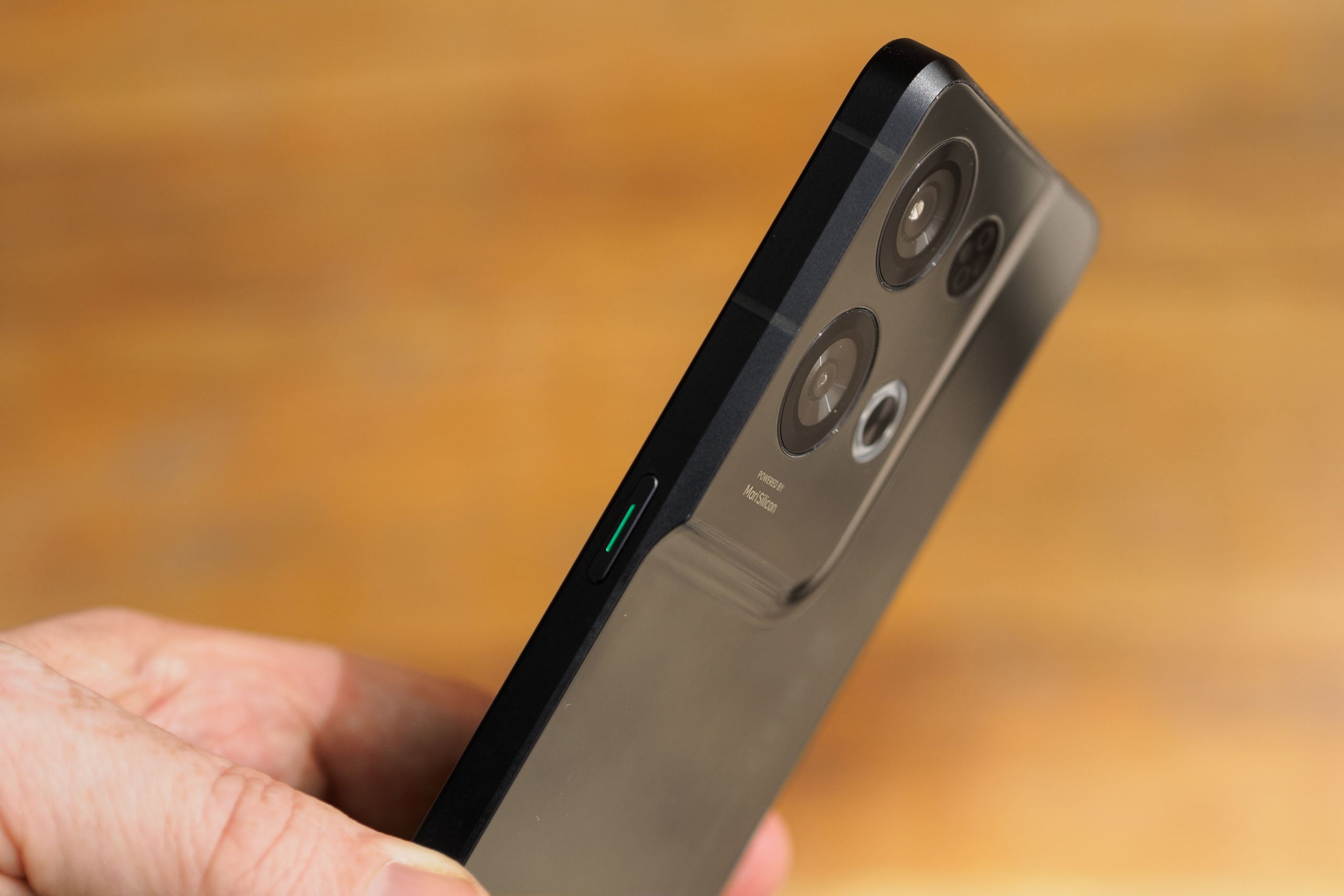
The camera bump protrudes by about 2mm, with a smooth moulding that encourages your fingers to stay away from the lenses. Photo: Andy Westlake
With smartphones highly reliant on computational photography, the inclusion of the NPU promises great things compared to the cheaper models in the Reno8 range. As we’ll see, though, it can’t make up for the smaller sensor of the wide camera, or do anything to fix the macro camera’s measly 2MP resolution.
OPPO Reno8 Pro 5G: Camera app
On the Reno8 Pro, Oppo has used a conventional Android camera app that’s simple and intuitive to use. Tapping the icon initially opens the fully automatic Photo mode, which offers a basic set of options. The zoom control lets you select between the main and ultra-wide cameras, or engage a 2x digital zoom. This is essentially a 12MP crop from the centre of the main camera’s 50MP sensor.
You’ll find touch buttons for controlling the LED flash, HDR mode, AI image enhancement, self-timer and aspect ratio. There’s also a 50MP mode, although naturally, it limits you to using the main camera only.
A selection of image-processing filters is available, including a nice Black & White mode alongside various more whimsical options. The camera records JPEG or HEIF files only, so filter effects are baked into the final image.
Switch to Pro mode and you get manual control over shutter speed, ISO, exposure compensation, focus and white balance, with a live histogram to help judge your exposure settings. But Pro mode comes with some significant limitations. You can’t use the ultra-wide camera, and unlike most flagship Android phones, there’s no option to record DNG raw files, either.
Specialist photographic modes include Night, Portrait, Panorama and Macro, with the latter being the only apparent means of engaging the specialist macro camera. There’s also an ‘Ultra HD’ high-resolution multi-shot mode that constructs 108 MP images.
In the standard Video mode, 4K recording is available using the main camera, again with a touch button for 2x digital zoom. However, engaging the ultra-wide camera switches down to Full HD resolution, as does enabling the Ultra Steady setting that provides enhanced electronic stabilisation. Oppo has also included a more advanced Film mode in the camera app, which provides manual control of exposure and records in a widescreen 20:9 aspect ratio. But curiously, this is only at 2400×1080 resolution, and not 4K.
OPPO Reno8 Pro 5G: Angle of view comparison
Here’s how the Oppo Reno8 Pro 5G’s cameras compare in terms of angle of view and image quality. Click on any image to see the full-resolution version.
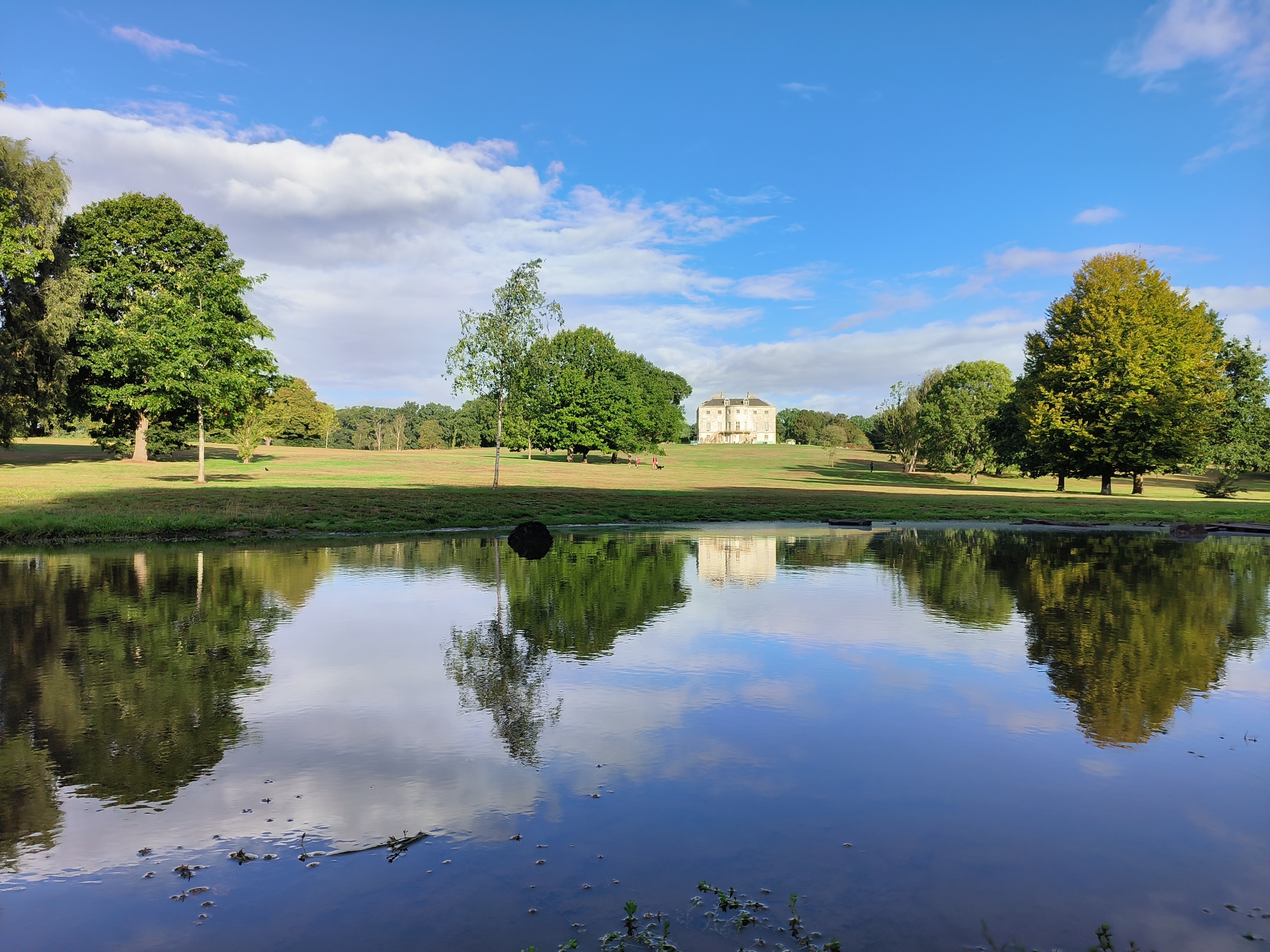
The main camera gives colourful, detailed images. 24mm equivalent, 1/1800sec at f/1.8, ISO 105. Photo: Andy Westlake

Set to 2x digital zoom, images maintain a decent level of detail. 50mm equivalent, 1/1900sec at f/1.8, ISO 104. Photo: Andy Westlake
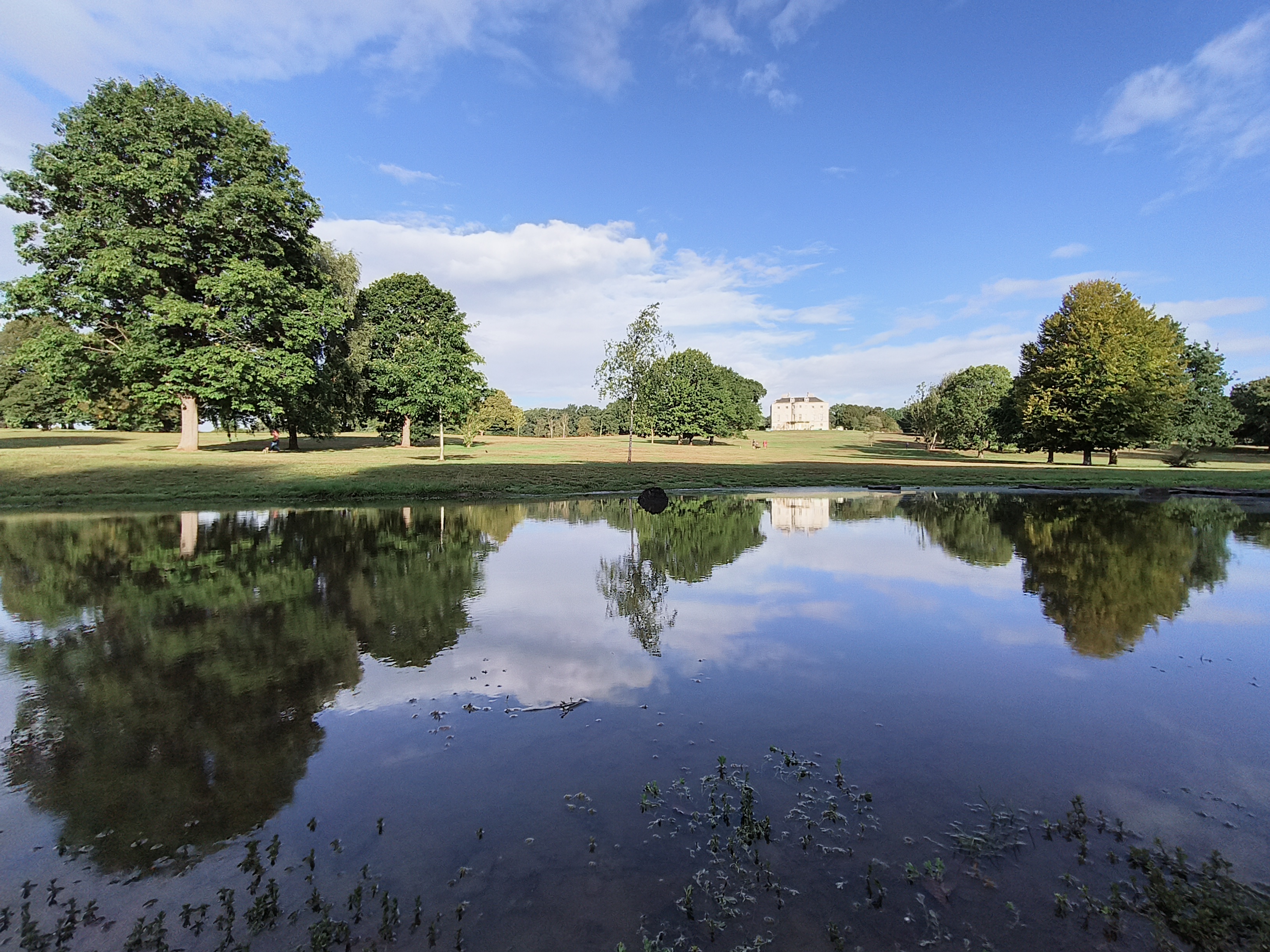
The ultra-wideangle camera gives less detail and relatively dull colours. 16mm equivalent, 1/1600sec at f/2.2, ISO 100. Photo: Andy Westlake
OPPO Reno8 Pro 5G: Image quality
When you come to examine photos taken with the Oppo Reno8 Pro, a theme quickly emerges. The main camera delivers very nice images, not only at its native 24mm wideangle setting, but also with up to 2x digital zoom. Unfortunately, though, the other cameras aren’t nearly as good.

The Eiffel Tower at sunrise. The Reno 8 Pro’s main camera gives fine images. 24mm equivalent, 1/100sec at f/1.8, ISO 214. Photo: Andy Westlake
Let’s look at this in greater detail. The main camera is capable of giving really attractive images, with warm, vibrant colours and plenty of detail across the frame. As has become the norm with smartphones, it also exploits computational photography to balance bright skies against dark backgrounds in a very natural-looking fashion, in a way that conventional cameras just can’t match.
If you pull your image files off the phone and examine them close-up on a computer screen, they’ll look decidedly over-processed, but to be fair this isn’t how they’re expected to be viewed.

Here the HDR processing has done a great job of balancing a bright sky with a much darker main subject, without looking unnatural. 24mm equivalent, 1/850sec at f/1.8, ISO 101. Photo: Andy Westlake
Switch to the ultra-wide lens, and you’ll find that the image quality drops substantially. The colours look dull and muted in comparison to the main camera, even when viewed on the phone’s screen.
It should come as no great surprise to find that the 8MP sensor delivers visibly less detail than the main camera, but this is compounded by the extra processing required to suppress image noise with the smaller sensor.

The Louvre, Paris. Compared to the main camera, the ultra-wide gives less detail and dull colours. 16mm equivalent, 1/2300sec at f/2.2, ISO 101. Photo: Andy Westlake
The images are still acceptable for social media use, which, of course, is where they’ll mostly end up. But they’re nowhere near as good as those from the Find X5 Pro’s ultra-wide camera, which employs the same, much larger image sensor as the main camera.

The specialist Macro mode camera gives muted colours and, at just 2MP, barely any detail. 22mm equivalent, 1/220sec at f/2.4, ISO 100. Photo: Andy Westlake
Engage the specialist macro mode, and the device will tell you to shoot at 4cm from the subject to get the best results. At this point, alarm bells will be ringing for any photographer who’s ever shot close-ups. Predictably, when you place this rectangular slab 4cm from your subject, you’ll usually find yourself blocking out your own light.
Even worse, the image files returned by the 2MP macro camera are awful, with muted colours and very little detail. You’re much better off moving the device back from your subject and using the main camera with digital zoom, which gives better colour, increased detail, and more attractive bokeh, too.

Shooting the same subject with 2x digital zoom, then cropping to match, has given a far more attractive image. 1/300sec at f/1.8, ISO 100. Photo: Andy Westlake
The other special modes generally do a nice job, though. Portrait mode works well with both the main and selfie cameras, detecting human subjects and blurring the background convincingly.
An onscreen slider allows you to control the effect using a virtual f-stop scale, producing realistic-looking blur discs from point light sources. It’s even smart enough to understand hats.

The Reno 8 Pro’s portrait mode gives convincing-looking background blur. This is the virtual f/1.4 setting. 24mm equivalent, 1/340sec at f/1.8, ISO 100. Photo: Andy Westlake
Night mode impresses, too, although Oppo’s implementation is subtly different to other companies. It doesn’t necessarily shoot a longer exposure than the standard Photo mode, but instead does a far better job of balancing the extremes of lighting found in night-time scenes, maintaining detail in highlights that would otherwise get clipped to white.

Night mode has done a great job of balancing the extremes of brightness in this image. 50mm equivalent, 1/25sec at f/1.8, ISO 1615. Photo: Andy Westlake
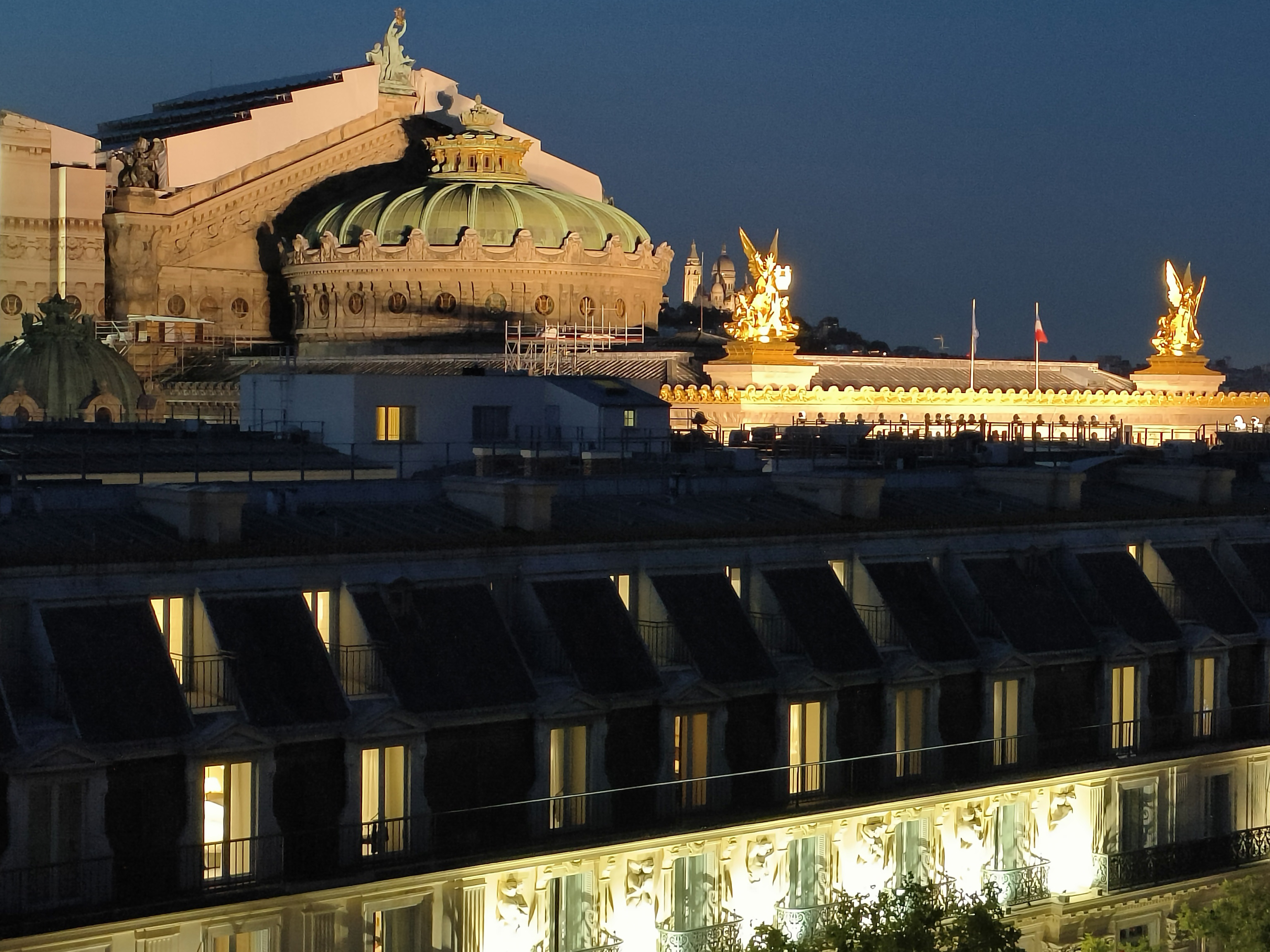
This comparison image, shot in the standard Photo mode, suffers from clipped highlights. 50mm equivalent, 1/35sec at f/1.8, ISO 1043. Photo: Andy Westlake
Switch the main camera to 50MP output, and you’ll find that this can deliver visibly more detail, at least in good light. I wasn’t convinced by the 108MP Ultra HD mode, though, which delivers minimal extra resolution while being prone to ghosting artefacts from anything that moves. It gives the impression of being a feature that’s been added mainly as a marketing counterpoint to the 108MP sensors used by some other phones.
Panorama mode works very well, though, giving detailed images with no visible stitching errors.
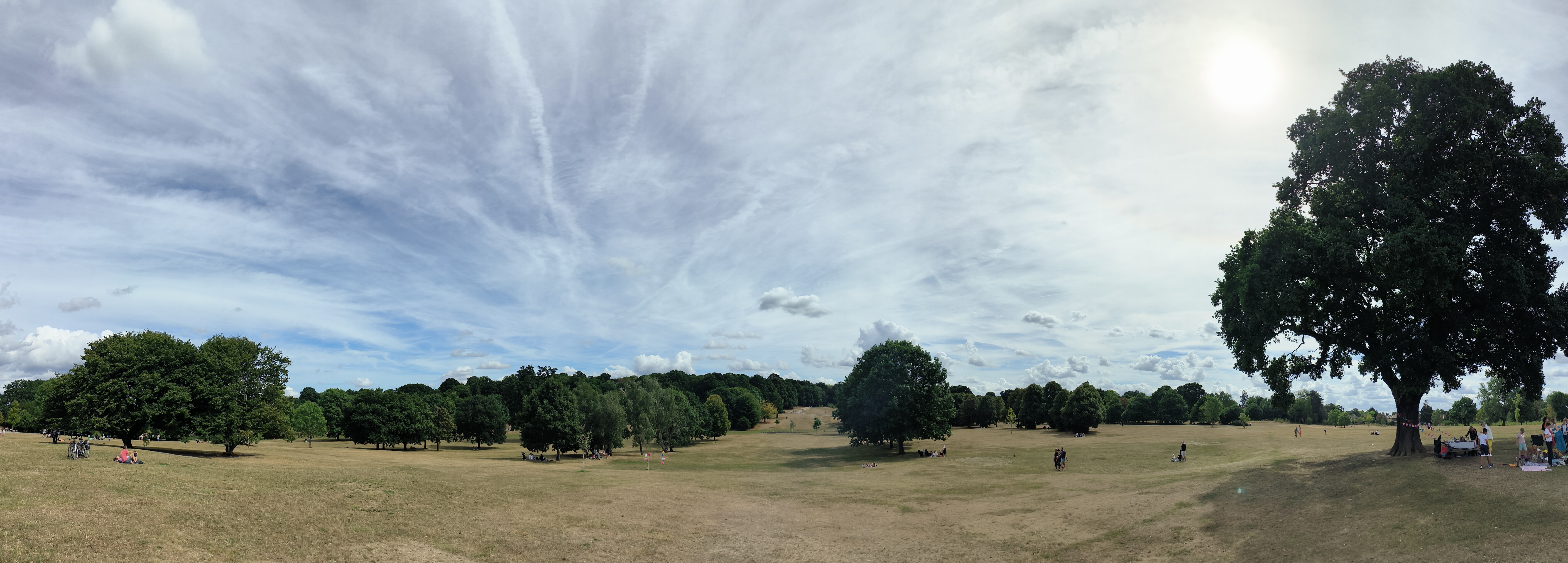
Panorama mode has done a superb job of balancing the dynamic range across the scene, while giving no visible stitching errors. Photo: Andy Westlake
Video quality is very creditable, with plenty of detail and clear sound, although it doesn’t take much wind to overwhelm the microphones. In daylight, Oppo’s Ultra HDR 4K Video works extremely well to balance bright skies against a darker subject, without the user having to do anything.
Likewise, 4K Ultra Night Video allows the camera to give natural-looking results in very low light, such as under street lighting. But again, the main camera delivers considerably better results than the ultra-wide, especially when light levels drop.
With no optical stabilisation, the device is entirely reliant on digital stabilisation. This does a reasonable job of keeping things steady when you pan across a scene, but isn’t up to the job of stabilising footage recorded while you’re walking. The Ultra Steady setting is visibly more effective, but it comes with a serious penalty in terms of detail, as it only records in Full HD with a field-of-view crop.
OPPO Reno8 Pro 5G: Value for Money
At $540 / £549, the Oppo Reno8 Pro goes almost head-to-head with the Google Pixel 7 (now surpassed by the Google Pixel 8). It’s also almost the same price as the Apple iPhone SE in its 256GB configuration. You certainly get a lot more camera for your money compared to the single-lensed iPhone SE, but against the Pixel 6, it’s more a case of swings and roundabouts.
The Reno8 Pro looks more stylish, boasts double the memory, and its camera app offers a greater degree of manual control. But the Pixel 6 includes better imaging hardware, with its main camera including a larger sensor and optical stabilisation. Its main and ultra-wide cameras are also properly matched in terms of colour output, while the camera app includes a host of useful and easy-to-use shooting modes.
It’s probably fair to say that the Oppo Reno8 Pro is the more attractive of the two devices, but the Google Pixel 6 has a (slightly) better camera.
OPPO Reno8 Pro 5G: Our Verdict
The Oppo Reno8 Pro proves that you don’t necessarily need to buy a flagship smartphone to get a decent camera. Its main camera in particular delivers good results across a range of shooting conditions, while the special modes such as Portrait, Night and Panorama all work very well.
If you mainly want your smartphone to be a dependable point-and-shoot for posting snaps and video clips to social media, it’ll do the job perfectly well at a relatively palatable price point.
If you’re looking to buy an Android phone in this price bracket, the Reno8 Pro counts as a viable alternative to the Google Pixel 6 and Google Pixel 7. I suspect most people will consider it to be more attractively designed, although its camera system perhaps isn’t quite as good overall.

The Reno 8 Pro’s black & white filter gives attractive images and works very well for street photography. Photo: Andy Westlake
Not surprisingly, though, if you’re prepared to fork out almost twice the money for a flagship device such as the OPPO Find X5 Pro, you’ll get something that’s a whole lot better. In comparison, the Reno8 Pro has a lower-quality ultra-wide camera and no telephoto lens at all, with a pointless macro camera in its place.
It can’t record DNG raw files either, but with all the multi-shot computational wizardry that’s routinely used by smartphone cameras, I’m not convinced this is a major drawback. Overall, though, it’s very much a case of you get what you pay for.

Further reading:
- How to take better smartphone photos
- How to take amazing portraits on a smartphone
- Using smartphones for street photography
- Guide to black and white smartphone photography
- Best used smartphones
Follow AP on Facebook, Twitter, Instagram, YouTube and TikTok.


